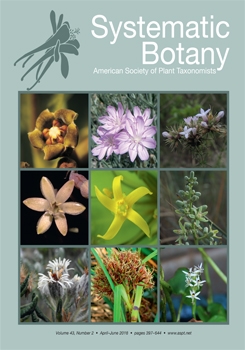A recent phylogenomic study has shown that
How to translate text using browser tools
21 June 2018
Reinstatement of the Genus Piofontia : A Phylogenomic-Based Study Reveals the Biphyletic Nature of Diplostephium (Asteraceae: Astereae)
Oscar M. Vargas
ACCESS THE FULL ARTICLE

Systematic Botany
Vol. 43 • No. 2
Apr-Jun 2018
Vol. 43 • No. 2
Apr-Jun 2018
Andes
páramo
South America




